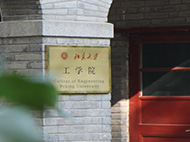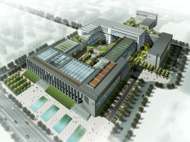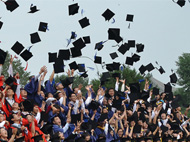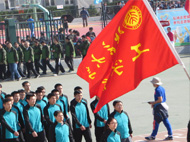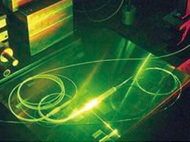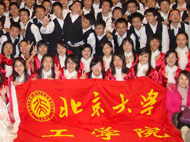主办:材料科学与工程系
报告人:王秀梅(清华大学材料学院)
时间:4月16日(周二)晚上18:40
地点:三教305教室
主持人:郑玉峰 教授
报告内容摘要:
The development of novel biomaterials that deliver precise regulatory signals serving as powerful artificial niches to direct cell fate is currently the focus of tissue engineering and regenerative medicine. In our study, we developed an aligned fibrin nanofiber hydrogel and self-assembling peptide hydrogels for spinal cord and peripheral nerve regeneration. We focused on the synergistic effects of the biophysical cues of structural alignment and soft stiffness, and biochemical cues of angiogenic and neurogenic peptides. The hierarchically aligned fibrin nanofiber hydrogel (AFG) that was fabricated through electrospinning and the concurrent molecular self-assembly process mimics both the soft and oriented features of nerve tissue, thus providing hybrid biophysical cues to instruct cell behavior in vitro and in vivo. We found that the low elasticity and aligned topography of AFG exhibit co-effects on promoting the neurogenic differentiation of human umbilical cord mesenchymal stem cells (hUMSCs) and inducing rapid neurite outgrowths longitudinally along the AFG fibers in vitro. Moreover, the AFG was applied for repairing sciatic nerve and spinal cord injury repair. AFG could promote endogenous neural cell fast migration and axonal invasion along AFG fibers, resulting in aligned tissue cables in vivo and neural functional recovery. The self-assembling peptide (SAP) hydrogel RADA was functionalized with angiogenic and neurogenic peptide motifs to construct appropriate neurovascular microenvironment for rat sciatic nerve regeneration. The dual-functionalized SAP (fSAP) hydrogels could deliver synergistically biochemical signals to accelerate the axonal regrowth and locomotor function recovery. The AFG and fSAP were then combined together, forming composite nanofibers hydrogels, which showed a promising effect on long-distance peripheral nerve repair. Our results suggest that matrix properties like stiffness, aligned topography, and bioactive motifs may instruct stem cell neurogenic differentiation and rapid neurite outgrowth, providing a great promise for biomaterial design for applications in nerve regeneration.
报告人简介:
王秀梅,清华大学材料学院教授,博士生导师。王秀梅主要从事生物材料基础研究及生物医用材料产品开发,包括骨、神经等组织再生修复材料的开发及临床转化。已发表生物材料相关SCI论文110余篇。曾荣获2011年度国家自然科学二等奖;2010-2011年度中华医学科技奖三等奖;2014年度山东省科技进步一等奖;2012年度清华大学“学术新人奖”;入选教育部2013年度“新世纪优秀人才支持计划”。目前担任国际期刊Tissue Engineering Part C co-Editor-in-Chief, Frontier of Materials Science、Regenerative Biomaterials、Biomaterials Research编委,国际期刊Current Tissue Engineering的Regional Editor of Asia。此外担任中国生物材料学会常务理事;中国生物材料学会神经修复材料分会副主任委员;中国材料研究会青年工作委员会常务理事;中国硅酸盐学会特种陶瓷分会理事等。


